Salt is everywhere. Without salt, we would die.
Of course, if you’ve ever been to the supermarket and tried to buy salt, you’ve probably realized that there are a bunch of different types. Every variation of this essential ingredient looks and tastes unique, plus interacts with foods in ways you could never expect.
Since, Saltiness is also one of the five basic tastes we experience, along with sweetness, sourness, bitterness and umami.
Why we have Salt Cravings
Part of the reason we crave salty snacks is that our cells need salt to function. Every single cell in our bodies contains salt in the form of ions. These charged particles become the electricity that powers our cells to perform whichever essential function they’re designed to do, like converting nutrients into energy. Because our bodies are continually losing salts when we sweat or use the restroom, we need to replenish the supply of salts through our diet constantly.
So, What Actually Is Salt and Is It All Bad?
Salt (Sodium Chloride), a well-debated nutrient, is essential in many functions in the body including fluid and electrolyte balance, muscle function and neuronal activity. Sodium plays a central role in the membrane potential for the majority of cells and in the action potential for the contraction of muscles.
Sodium can occur naturally in foods such as beets, mushrooms and milk, however, it is also added to foods for preservation and taste. Unfortunately, a diet with excess salt intake is a cause of high blood pressure which subsequently increases the risk of cardiovascular disease (CVD).
Here’s all that you need to know about the most common kinds of salt, including how it’s made, what it tastes like, and which are best for baking, cooking, and garnishing.
Refined salt (table salt)

This is the basic stuff you’ll find in most salt shakers. Most table salt is mined, but that salt is put into water, purified of other trace minerals, then re-dehydrated to create a uniform product. Table salts are usually 97 to 99 per cent sodium chloride, with some added anti-caking agents, and a lot also include iodide, which is an essential nutrient that can get removed during the purification process (not to be confused with iodine). That’s why the packages of many unrefined kinds of salt say “not a source of iodide.”
When to use it: The benefits of table salt are its consistency in saltiness, as well as its refined size. Table salt easily dissolves and is ideal for baking. The general rule of thumb is that baking recipes call for table salt, and other salts should not be used as a substitution. Table salt controls yeast growth and also strengthens gluten. It has an important function so must be measured accurately.
Kosher salt

This is a coarse-grained flaky salt. It’s a favourite with chefs because it’s easy to pinch and handle, and it has no additives (like iodine) or anti-caking agents. Also, it’s generally less pungent than table salt and dissolves easily. Note: The granules are much flakier and larger than table salt, therefore you can’t use them interchangeably. The name is actually due to the fact that this type of large-crystal salt is used in making meats kosher (another name for it is “koshering salt”).
When to use it: Kosher salt is an excellent finishing salt — to sprinkle on your dishes for last-minute seasonings. Kosher salt is also the preferred salt for bringing, curing and often pickling, as it doesn’t contain iodine. Iodine can react negatively with certain foods, so it is best to avoid iodized salts when preserving.
Sea salt
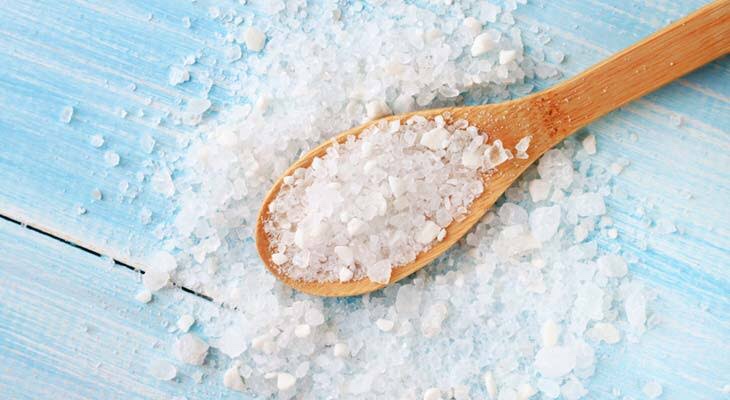
Sea salt refers to unrefined salt that is sourced from — appropriately — the sea. It is collected by the evaporation of seawater. The lack of refinement in sea salt means that it will still contain traces of other minerals — which some suggest enhances the flavour of the salt. Although often thought to be a healthier alternative to table salt, by weight, both contain the same level of sodium chloride.
When to use it: If you prefer the flavour of sea salt to table salt, then you can use them interchangeably (as long as you can find a sea salt with a very fine grain). Alternatively, sea salt can be used in a salt grinder as a finishing salt.
Himalayan pink salt

This full-flavoured mineral salt is mined from ancient sea salt deposits, located deep in the Himalayan mountain range. Its high mineral content gives this salt its stunning pink to red hues. Potassium and calcium, as well as iron and magnesium, are some of the many trace minerals that make up this highly-prized salt. These trace elements give this salt its unique, varied taste.
When to use it: Although it is generally sold as a medium-coarse salt, you can also find it available in finely ground versions. Himalayan pink makes a great addition to complex dishes that require more frequent salting such as in stews or any brining solution.
Himalayan black salt
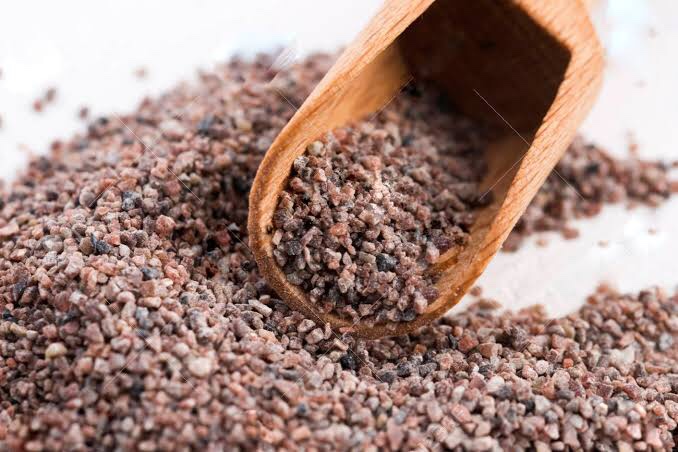
This vibrant salt is actually more purple-red than black in its solid form, and when you grind it down it takes on a pinkish hue, but its formal name, Kala Namak, translates to “black salt”. The iron sulfide present in the salt gives it its dark color and it also contains trace amounts of magnesium and sulfates.
When to use it: When used properly, it can be added to vegan food to mimic the taste of eggs, though if you use it wrong your food may end up tasting like salty rotten eggs. This makes it a popular choice for adding extra flavor to meat and egg-free dishes. It is used extensively throughout traditional South Asian cuisines.
Celtic Sea Salt

Also known as sel gris (French for “grey salt”), Celtic sea salt is harvested from the bottom of tidal ponds off the coast of France. The salt crystals are raked out after sinking; this, plus the mineral-rich seawater its extracted from, gives Celtic salt its moist, chunky grains, grey hue and briny taste.
When to use it: It’s great on fish and meat as both a cooking and finishing salt, as well as for baking.
Hawaiian black lava salt

Hawaiian black lava salt employs a winning combination of flaky Pacific sea salt and black lava from Hawaii. Rich in activated carbon (which is prized for its detoxification properties) this salt will not only add a unique flavor, but it can also help to aid digestion.
In addition to its crisp sea salt taste, Hawaiian black lava salt is renowned for its delicious smoky flavor with hints of sulfur. Some people describe it as having an almost nutty taste, too.
When to use it: Thanks to its dramatic appearance, this salt looks fantastic sprinkled over any light-colored dishes such as fish or poultry. It also adds texture and makes an excellent accompaniment to grilled eggplant and mashed potato. It is important to note that this salt should only be used as a finishing salt. If used during cooking, the salt will dissolve, leaving a black residue at the bottom of your dish!
Smoked salt
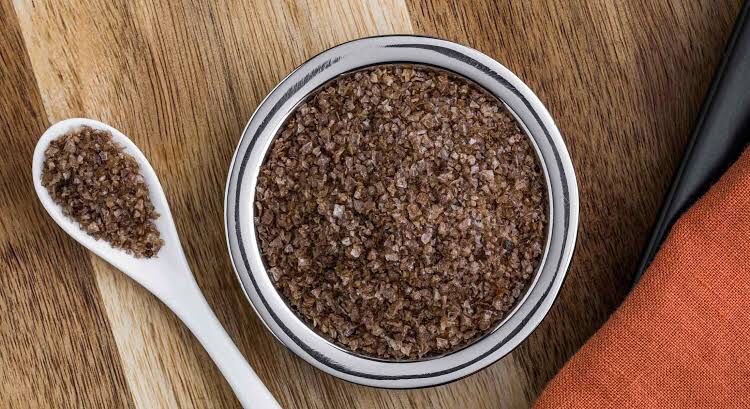
Mesquit Smoked salt is an aromatic salt smoked with any number of mesquite bark free woods for up to 14 days. Smoked Salt can be made from a number of different types of barks and the kind of wood used for smoking impacts the flavor, which can range from subtle to bold or even sweet. The most common choices are alder wood, apple wood, hickory, mesquite, and oak.
When to use it: Infused smoked salts like smoked bacon chipotle sea salt are very popular because of the dynamic flavor profiles.
Rock Salt
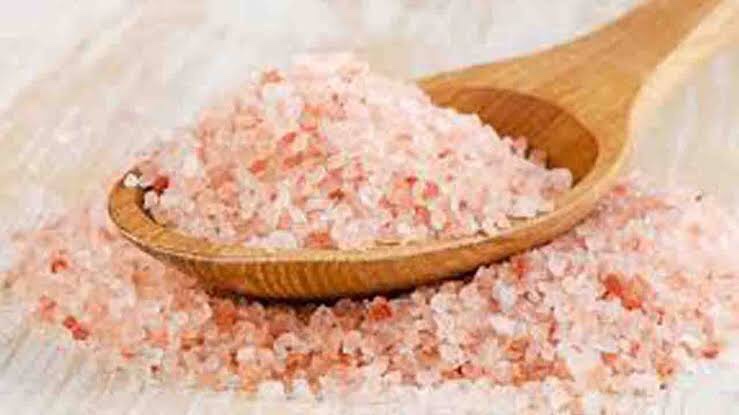
Rock salt is salt that has been extracted from underground salt mines through the process of mining with dynamite and then crushed further for food use. It can be found under the rugged layers of the earth’s surface and is scientifically known as halite. Rock salt has various benefits.; Contains more natural minerals and elements found in the human body.
When to use it: Gives flavor dimensions and additional texture on breads and other baked goods and can be used to cure and remove toxins from meats.
Flake salt
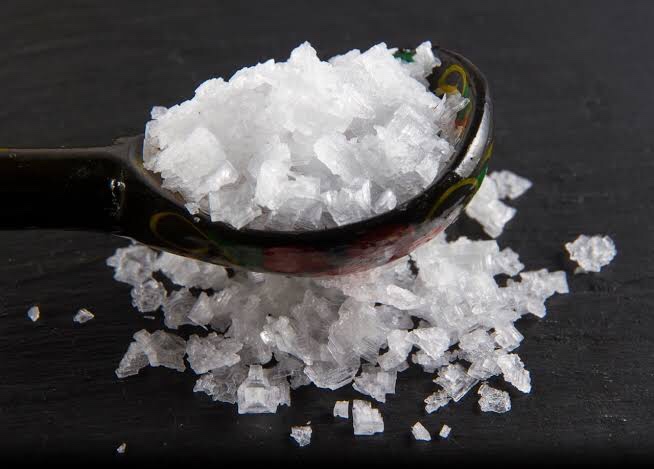
Flake salt is a type of salt that is characterized by its large, flat flakes. It can form naturally, but it is usually produced by boiling brine or through evaporative techniques. The delicate salt shavings that are produced by these methods tend to have a lower mineral content than other types of salts for a saltier taste. With their large surface area, the flakes dissolve rapidly yet have a crunchy texture, making flake salt ideal for use as a finishing salt.
When to use it: However, thanks to its unusual properties and “melting crunchiness”, it is perhaps best put to effect in sweet dishes such as caramel or chocolate desserts, cookies or even sprinkled on ice cream.
Hawaiian alaea salt
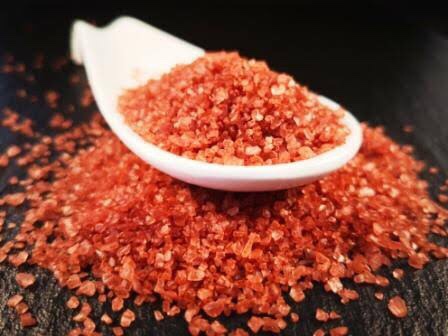
Also known as “Hawaiian Red Salt”, this salt comes from where the Pacific Ocean meets Hawaiian shores. Once the salt has been harvested, it is mixed with volcanic red alaea clay. This brick-red colored clay is rich in minerals and iron oxide. Traditionally, it was also used to cleanse, purify and promote healing.
When to use it: Hawaiian alaea salt has a slightly nutty flavor and is prized for its flavor retention throughout cooking, meaning a small amount goes a long way. It is used in traditional dishes such as Hawaiian poke or pork kalua. Sprinkle it over grilled fish for an authentic taste or use it as an eye-catching garnish on any pale dish.
Truffle salt

Truffle salt is a great way to add flavor and depth to any dish. High-quality sea salt is infused and mixed with fine truffle fragments for a winning gastronomical combination. Truffles have been highly prized for centuries for their earthy, exotic flavor and they are one of the most expensive raw food that you can buy.
When to use it: Use this exquisite infused salt to add an extra dimension to simple dishes such as rice or pasta recipes, grilled meat or cream-based soups and salads. In fact, almost any dish will benefit from a sprinkle of truffle salt just as it reaches the table.
Curing salt
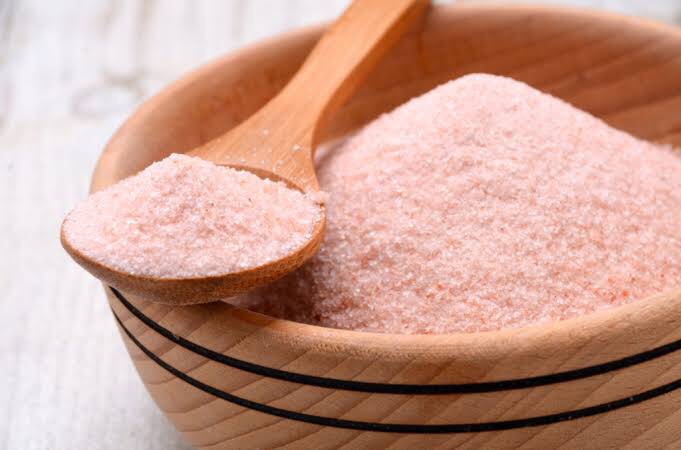
Curing salts, also known as pink salt or Prague powder, are made up of a mixture of table salt combined with sodium nitrate and a distinctive pink dye.
When to use it: They are used to preserve meat by inhibiting the growth of bacteria that leads to spoilage. Curing salts have been used for centuries before the advent of refrigeration and modern food processing and preservation techniques. You must only use curing salts as directed and be sure to store them out of children’s reach. Purchasing curing salts will enable you to make your own ham, pastrami or corned beef.
Pickling salts

Pickling salt, as the name suggests are used for pickling. Essentially, pickling salt is pure sodium chloride, without any added ingredients. Iodine or anti-caking agents that are frequently added to regular salt can make the pickling solution go cloudy or gather as a residue at the bottom of your jar.
When to use it: Pickling salt also tends to be very fine, which helps to speed up the pickling process as the salt dissolves more rapidly. You can use pickling salt in place of regular salt, but it may cake pretty quickly if left out.
Conclusion
While salt often gets a bad press, it is an essential ingredient for delicious cooking and is even an important ingredient in a range of artisanal products including soap.
Rather than sprinkling your food with your regular old table salt day-after-day, expand your culinary skill-set and experiment with these different types of salt for a satisfying punch of new flavors and textures!
Extra Health Tips: How Can We Reduce Our Extra Salt Intake
• Try to avoid adding table salt when cooking or at the table, but if you do choose to add salt, just add a small pinch.
• Prepare your own meals using fresh foods such as fruit and vegetables to manage how much salt is added.
• Rinse canned foods which are soaked in salt water such as tuna, beans and vegetables.
• Be aware of foods high in salt such as meat (including processed meat), cheese, ready-made soups, ketchup, soy sauce, stock cubes, gravy powder, tinned food containing salt, salted snacks such as crisps, nuts, biscuits, popcorn, ready-meals, takeaway meals, bread.
• Try to choose foods with less than 0.3g/100g of salt which will be shown on food labels.
• Use alternatives such as herbs and spices to add extra flavour to food and also have additional health benefits including anti-inflammatory and cholesterol-lowering effects.
A salt’s salinity, taste, texture, aroma and color depends on where it’s harvested and how it is processed. These differences make salt truly integral to every step of the cooking process and every recipe.
By Priyanshi Bhatnagar


Leave a comment